For the 2023-24 academic year, there were 1,277 residents enrolled in 99 accredited residency training programs. About 59 percent of the 408 individuals who applied for residency matched.
Program Categories
Single Degree Programs
OMS Certificate
(4 years/48 months)
Four-year training program in OMS defined by the standards and required of all programs.
MD Alternative
(5-7 years/60-84 months)
Four-year certificate with MD (optional) OMS training program. The applicant is accepted into a four-year program and medical school if they qualify by advanced standing requisites. The medical education is a continuum following OMS training. Regardless of acceptance into medical school, all residents must complete the four-year training program.
Dual Degree Programs MD Integrated
(6 years/72 months)
The training program is greater than four years in length. The training program guarantees the applicant a place in medical school without advanced standing requisites and integrates medical education and 30 months of OMS training into the program.
Evaluating a Program
Diversity exists within residency programs, including areas of interest manifested by individual programs. Answers to the following questions may be useful in selecting a program.
Programs may vary significantly in length, although a minimum of 48 months of training is required. Some may extend to six to eight years depending on the amount of additional training provided.
Several training programs concurrently provide medical education resulting in the awarding of a medical degree. Some of these programs provide the medical training as an integrated part of their training and others as an alternative component available following completion of the four-year training program. It is important for the applicant to understand the procedures for acceptance and completion of the medical degree. The resident is sometimes discharged if he/she fails to qualify for medical school.
This may indicate to you the quality of residents who were graduating from a particular program. Currently, board-certification is a criterion for gaining surgical privileges in many hospital and managed care organizations. For more information about the American Board of Oral and Maxillofacial Surgery (ABOMS), visit ABOMS.org.
Some training programs offer additional research or clinical training beyond the resident level in certain subspecialty areas. These may include microsurgery, oncology, facial esthetics, pediatric oral and maxillofacial surgery, craniofacial surgery, etc. You also must inquire about the case load in these areas to ensure that the additional programs offered do not interfere with minimum requirements for training in a specified area of the specialty.
The Commission on Dental Accreditation (CODA) rigorously reviews and recommends the accreditation status of the OMS training programs at least every five years. It is important that the applicant understands the accreditation status of a program upon entering that program, and the influence of this on the residency training.
Some training programs find it beneficial for their residents to rotate to other institutions for specific areas of training. These rotations may be distant from the institution and can vary in duration. There has been a recent attempt to provide exposure to other methods and philosophies of treatment by some training programs. Programs that incorporate this may offer rotations to foreign countries, and you should inquire as to how these rotations fit into fulfillment of the current requirements for training as well as family commitments.
AAOMS has a classified ad section in the member magazine, AAOMS Today, published six times per year, with information about oral and maxillofacial surgeons seeking associates. In addition, AAOMS CareerLine offers residents access to job opportunities 24-hours a day, seven days a week. You can respond to posted jobs by generating a confidential mini-CV or sending an e-mail. Also, your program director and both full-time and part-time faculty are excellent sources of information. You are encouraged to write directly to AAOMS members in the area in which you wish to practice.
Most states require you to take the general dentistry examination in order to practice. However, a growing number of states are establishing reciprocity like the Commission on Dental Competency Assessments (CDCA), which allows you to show a dental license in one state or region. Through this and other credentials you may obtain a limited specialty license to practice oral and maxillofacial surgery. AAOMS encourages states to license oral and maxillofacial surgeons by credentials. Specialty licensure examinations are sometimes required and are often given in June. If you do not obtain specialty licensure in states with these provisions, you will be unable to announce yourself as a specialist. It is prudent to contact the state board of dental examiners of any state you may be interested in six to nine months in advance to learn about the requirements. If you currently do not have a general dentistry license in any state, it would be a good idea to take a state or regional dental exam in the location that you desire to practice.
Once you have determined the locale(s) in which you desire to practice, you should get at least a six-month start on writing the hospital(s) to obtain privileges. Your operating privileges are granted based on training, experience and competence not your degree(s). Maintaining a log of surgical cases performed during residency is imperative because it represents documentation needed to seek hospital privileges. This is especially true for all major oral and maxillofacial surgery privileges. It is a good idea to contact the OMSs on a particular hospital staff before you apply for privileges to gain their support – especially if you’re planning to apply for privileges for an area in oral and maxillofacial surgery that is not commonly performed at that hospital. Each individual hospital is governed by bylaws that may differ in their requirements. Commonly, oral and maxillofacial surgeons are part of the Department of Surgery.
Nothing could be further from the truth. AAOMS has stated that oral and maxillofacial surgery is a recognized dental specialty and has been so for nearly 90 years. Most OMSs get the vast majority of their referrals from other dentists, and dentoalveolar surgery is the mainstay of most OMS practices.
USLME is the United States Medical Licensing Exam. It is taken in three steps and is required for graduation from medical school and for acquiring a medical license. Step I is taken after your first or second year in medical school and covers primarily the basic sciences. Step II is taken some time before you graduate from medical school and is more clinically oriented and Step III is taken after you graduate from medical school (usually after one year of residency).
Most medical schools require that you pass or at least take Step I before you start your clinical rotations. The consequences of not passing Step I vary from program to program. Some programs (contingency programs) dismiss you from the medical school and/or surgery program. If you plan on attending a dual degree program, be sure to ask when you will be required to take USMLE Step I, how residents in that program prepare for the exam, what the pass rate of previous residents at that program has been, and what are the consequences for not passing the exam. Most OMS residents effectively prepare for and pass the USMLE exams.




